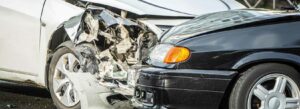If you have not already, your first step after a hit-and-run is to call 911. You should also take time to document everything you can about the fleeing vehicle and seek medical attention, even if you feel fine. Be certain to also report the accident to your insurance company within 24-72 hours to preserve your right to compensation through uninsured motorist or collision coverage.
Hit-and-run crashes create devastating situations as victims face mounting medical bills and repair costs without access to the fleeing driver’s insurance. Taking proper steps after a hit-and-run accident protects your health, preserves evidence that may identify the driver, and strengthens your uninsured motorist insurance claim even if the responsible party never surfaces.
What You Need to Know about Hit and Run Accidents
- Call 911 immediately for police response and medical evaluation, as official reports strengthen insurance claims and help locate fleeing drivers.
- Your uninsured motorist coverage typically pays for injuries and property damage when hit-and-run drivers can’t be identified.
- Document everything possible: vehicle descriptions, partial plates, witness information, and scene photos before evidence disappears
- Report to your insurance within policy deadlines (usually 24-72 hours) to preserve coverage rights
- Medical treatment within 14 days establishes injury connections crucial for PIP and bodily injury claims
Steps to Take at the Scene of a Hit-and-Run Crash

Call 911 even for seemingly minor accidents. Police reports serve multiple purposes beyond just documenting the crime: they create official records for insurance claims, initiate investigations to find the fleeing driver, and establish that you weren’t at fault. Additionally, emergency medical technicians (EMTs) can evaluate injuries that might not show symptoms immediately, like concussions or internal trauma.
While waiting for emergency services, start gathering evidence if you’re physically able. Every detail matters when tracking hit-and-run drivers or proving insurance claims. Focus on collecting specific information that tends to disappear quickly.
Critical evidence to document immediately includes:
- Vehicle Details: Color, make, model, and any distinguishing features like damage, stickers, or custom modifications—even “dark SUV” helps narrow searches
- Partial License Plates: Even two or three characters combined with vehicle description significantly aids police investigations
- Driver Description: Hair color, approximate age, gender, clothing, or any visible features you noticed during the brief encounter
- Scene Evidence: Skid marks showing speed and direction, debris like broken mirrors or bumper pieces containing paint transfer, and traffic light timing
- Witness Information: Names and phone numbers of anyone who saw the accident, including drivers who stopped to help
Take photos of everything including your vehicle damage from multiple angles, the accident scene showing road conditions and visibility, your injuries as they appear immediately, and any property damage to personal items.
Do I Need a Police Report for a Hit-and-Run Insurance Claim?
Police reports provide essential documentation that insurance companies typically require for hit-and-run claims, particularly for uninsured motorist coverage. Most insurance policies contain cooperation clauses requiring you to report crimes like hit-and-runs to law enforcement promptly. Without this official documentation, insurers may deny claims or reduce compensation.
The responding officer will document the scene, interview witnesses, and create an official record of the fleeing driver’s crime. This report includes details you might miss in shock: exact location coordinates, weather conditions, road design factors, and witness statements taken immediately when memories remain fresh. Officers also can check nearby traffic cameras, business surveillance systems, and automated license plate readers that might have captured the fleeing vehicle.
The police report serves purposes beyond insurance claims. It starts the criminal investigation process, potentially leading to the driver’s identification through paint transfer analysis, vehicle part databases, or witness tips. Even if the driver isn’t found immediately, the report preserves your right to pursue claims if they’re identified later through repair shop reports or conscience-driven confessions.
Will Uninsured Motorist Coverage Pay If the Driver Isn’t Found?
Uninsured motorist (UM) coverage specifically includes hit-and-run accidents in most states, treating the fleeing driver as uninsured since their insurance can’t be accessed. This coverage pays for medical expenses, lost wages, pain and suffering, and property damage when hit-and-run drivers remain unidentified. Your UM coverage essentially substitutes for the liability insurance the fleeing driver should have provided.
State-specific requirements for UM coverage in hit-and-run cases vary significantly. Physical contact requirements and reporting deadlines determine whether your claim qualifies for benefits.
Key UM coverage requirements by state include:
- Georgia: Requires physical contact between vehicles for UM property damage claims, allows UM stacking unless specifically rejected in writing, and mandates UM coverage equal to liability limits unless reduced in writing.
- Florida: No physical contact required for UM claims, PIP provides immediate $10,000 in medical coverage regardless of fault, and UM stacking permitted unless explicitly rejected.
- Tennessee: Physical contact required for hit-and-run UM claims, minimum UM coverage of $25,000/$50,000/$15,000, and the anti-stacking law prohibits combining coverage from multiple vehicles.
Your UM coverage limits typically match your liability coverage. For example, if you carry 100/300/50 liability coverage, your UM coverage provides up to $100,000 per person and $300,000 per accident for injuries, plus $50,000 for property damage. Georgia and Tennessee follow this matching principle, while Florida allows different UM limits with a written rejection of equal coverage.
Stacking provisions in Georgia and Florida can multiply your coverage when insuring multiple vehicles, potentially doubling or tripling UM limits for serious injuries. Tennessee prohibits stacking, limiting recovery to single policy limits regardless of the number of vehicles insured. Review your declarations page to confirm your state’s coverage amounts and stacking status.
Does Collision Coverage Apply to Hit-and-Run Damage?
Collision coverage pays for your vehicle repairs after hit-and-run accidents, regardless of whether police find the fleeing driver. Unlike uninsured motorist property damage coverage, collision doesn’t require identifying the other vehicle or proving physical contact; it simply covers damage to your car from impact with another vehicle or object.
Your collision deductible applies to hit-and-run claims just like any other accident. Let’s say you carry a $500 deductible and suffer $3,000 in damage, insurance pays $2,500 while you cover the first $500. Some insurers offer “waiver of collision deductible” endorsements specifically for uninsured motorist situations, eliminating your deductible when hit-and-run drivers can’t be found.
The claims process for collision coverage typically moves faster than UM property damage claims since it doesn’t require an extensive investigation about the other driver. Your insurer assesses damage, approves repairs, and issues payment based solely on your vehicle’s damage.
You may consider using collision coverage even if you have UM property damage available. Some insurers increase UM premiums after claims but don’t penalize collision claims for not-at-fault accidents. Your agent and your lawyer can explain how each coverage type affects your specific policy and future rates.
What Evidence Helps Find a Hit-and-Run Driver?

Dashcam footage provides the most compelling evidence, potentially capturing license plates, driver faces, and the entire accident sequence. Even if your camera didn’t capture clear identifying information, it proves the accident occurred and shows you weren’t at fault. Rear-facing cameras prove especially valuable for hit-and-runs, as many drivers flee forward after rear-end collisions.
Expanding Your Evidence Search
Technology and human behavior create evidence trails that experienced investigators know how to follow. Additional evidence sources that may be overlooked include:
- Business Surveillance: Nearby stores, banks, and gas stations often have cameras covering parking lots and adjacent streets
- Residential Security Systems: Ring doorbells, Nest cameras, and similar devices from nearby homes may have captured the fleeing vehicle
- Traffic Cameras: Red light cameras, toll booth systems, and municipal traffic monitoring cameras timestamp vehicles passing through
- Social Media: Next Door posts, Facebook community groups, and Twitter may generate tips about damaged vehicles seen after accidents
- Repair Shop Canvassing: Body shops receive damaged vehicles daily, and some report suspicious damage matching hit-and-run descriptions
Paint transfer analysis may help identify the vehicle make and model when fragments remain on your car. Modern automotive paint contains multiple layers with chemical signatures specific to manufacturers and even production years. Crime labs can narrow searches to specific vehicle models and color codes.
How Long Do I Have to File a Hit-and-Run Claim?
Time limits for hit-and-run claims create multiple deadlines, each affecting different aspects of your case. Insurance policies impose the shortest deadlines, usually requiring notification within 24-72 hours for hit-and-run accidents. Your policy’s duties after loss section specifies exact timeframes, and missing these deadlines can void coverage entirely.
State-specific deadlines for hit-and-run claims vary across Calvin Smith Law’s practice areas:
- Georgia: Two-year statute of limitations for personal injury and property damage claims, with criminal prosecution allowing one year for misdemeanors and four years for felony hit-and-run charges.
- Florida: Two-year statute of limitations for personal injury (recently reduced from four years), with PIP benefits requiring medical treatment within 14 days of the accident for coverage.
- Tennessee: One-year statute of limitations for personal injury claims (shortest in the region), two years for property damage, and criminal prosecution within two years for most hit-and-run offenses.
The criminal prosecution statute of limitations affects your ability to receive restitution if police eventually identify the driver. Prosecutors cannot file charges after these deadlines expire, even if police finally identify the driver through later evidence.
Your medical treatment timing also affects claim values. Insurance companies scrutinize gaps between accidents and first treatment, arguing that delays indicate minor injuries. Florida’s PIP coverage specifically requires treatment within 14 days for benefits, while Georgia and Tennessee insurers expect treatment within 72 hours to establish clear injury connections.
Can I Get Compensation for Injuries If the Driver Is Never Identified?
Your ability to receive injury compensation doesn’t depend on finding the hit-and-run driver, thanks to multiple insurance coverages available in Georgia, Florida, and Tennessee. Each state offers different combinations of coverage that protect hit-and-run victims even when the responsible driver vanishes.
Coverage options vary significantly by state:
- Florida: Mandatory PIP provides $10,000 in no-fault benefits, UM coverage is required unless rejected in writing, and MedPay is available as additional optional coverage.
- Georgia: MedPay is optional but common, UM coverage is required at minimum limits unless rejected, and coverage applies to hit-and-run victims with a physical contact requirement.
- Tennessee: MedPay optional coverage, UM required at state minimums, and a strict physical contact requirement for hit-and-run UM claims.
Health insurance coordinates with auto coverage to fill gaps, though your health insurer may claim reimbursement if the driver is later found. Keep detailed records of all payments to properly coordinate benefits and protect against double recovery claims.
What If I Was a Pedestrian or a Cyclist?

If you don’t own a car, household family members’ policies might provide coverage. Most auto policies extend UM benefits to resident relatives, meaning you could claim under a parent’s, spouse’s, or adult child’s policy if you live together. Some states require insurers to offer this coverage, while others make it optional.
Homeowners and renters insurance sometimes include limited medical payments coverage for injuries away from home. While these policies won’t cover pain and suffering or lost wages, they might pay initial medical expenses up to policy limits.
The pedestrian and cyclist hit-and-run investigation process can sometimes yield better results than vehicle-to-vehicle crashes. Security cameras from businesses frequently capture better angles of pedestrian accidents occurring in crosswalks or sidewalks. Witnesses also tend to stop more often for injured pedestrians than for vehicle-only crashes.
FAQ About Hit-and-Run Accidents
Will My Insurance Rates Go Up After a Hit-and-Run?
Most insurers don’t increase rates for not-at-fault accidents like hit-and-runs, though policies vary by company and state regulations. Filing under collision coverage typically has less rate impact than at-fault accidents, while UM claims rarely affect premiums.
Do I Need a Lawyer for a Hit-and-Run Case?
Legal representation becomes valuable when injuries are serious, insurance companies deny claims, or multiple coverage sources require coordination. Attorneys can investigate to find fleeing drivers, negotiate with insurers, and pursue bad faith claims when companies wrongfully deny coverage.
What If the Hit-and-Run Driver Is Found Later?
You can pursue claims against identified drivers within statute of limitations deadlines, potentially recovering compensation beyond what your insurance paid. Your insurer may claim reimbursement rights for amounts they’ve already paid on your behalf.
What Should I Do If My Parked Car Was Hit?
Document damage immediately with photos, check for witnesses and surveillance cameras nearby, and file a police report even without driver information. Collision coverage typically pays for repairs minus your deductible, while UMPD coverage varies by state. Georgia and Tennessee require physical evidence of the striking vehicle, but Florida may cover parked car hit-and-runs without identification.
What If I Didn’t Call the Police Right Away?
While immediate reporting is best, most states allow filing reports within 24-72 hours for property damage and up to 10 days for injuries. Contact the police as soon as possible and explain any delay to preserve your insurance coverage rights.
Getting Assistance with Your Hit-and-Run Claim
Hit-and-run accidents create complex insurance situations requiring careful navigation of multiple coverage sources while dealing with injuries and vehicle damage.
Calvin Smith Law helps hit-and-run victims throughout Georgia, Tennessee, and Florida pursue compensation through all available insurance policies and legal remedies. Our attorneys investigate to identify fleeing drivers, coordinate multiple insurance coverages, and fight claim denials that leave victims without rightful compensation.
Don’t let a fleeing driver leave you with mounting medical bills and repair costs. Contact Calvin Smith Law for a free consultation about your hit-and-run accident. We’ll review your insurance coverage, explain your options, and fight for fair compensation. Call today to protect your rights and begin building your claim.









